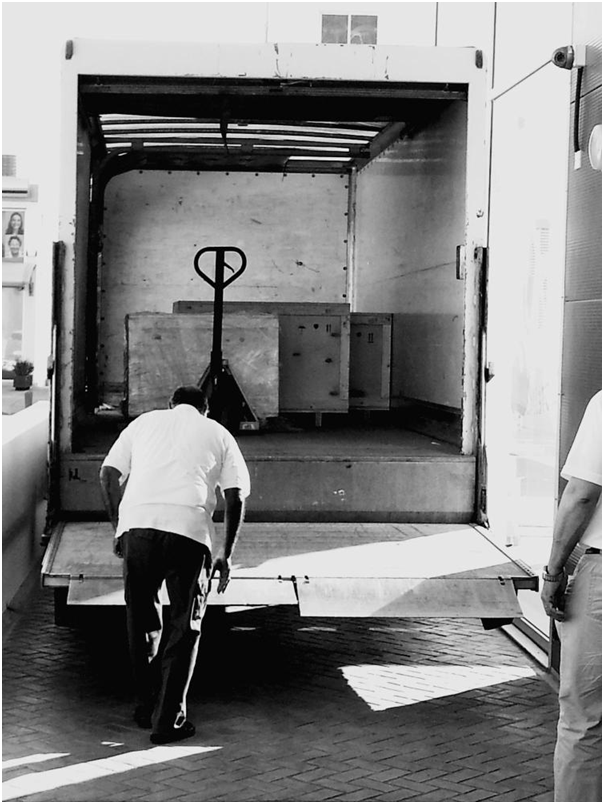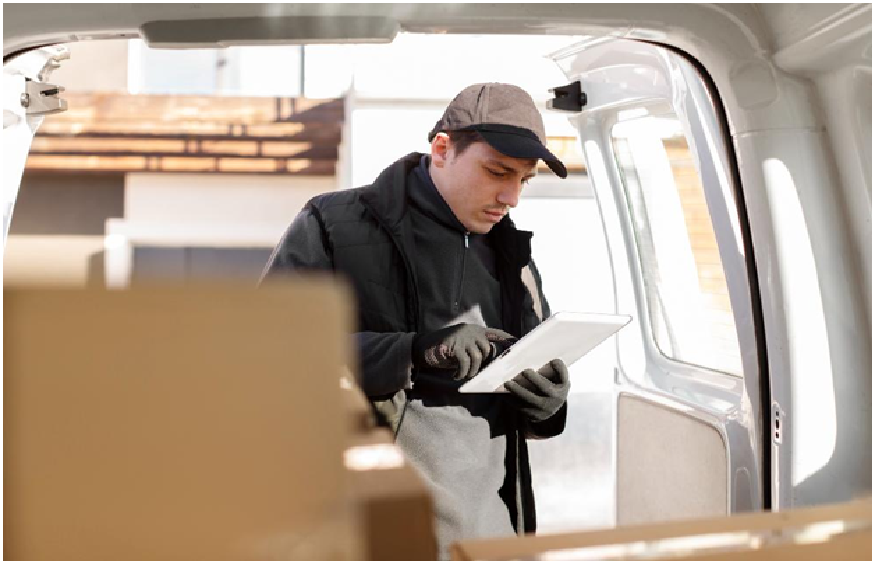Shipping your precious artwork can be a nerve-wracking task. The key to ensuring that your pieces arrive safely lies in selecting the right carrier and understanding the various aspects of art shipping. In this guide, we’ll delve into everything you need to know about picking the perfect carrier for your unique art pieces without feeling overwhelmed by the process.
Understanding Your Artwork’s Needs
Evaluating the Fragility Of Your Artwork
Before jumping into the selection process, it’s essential to evaluate the fragility of your artwork. Different artworks have different needs based on their materials and construction. For example, a delicate oil painting requires more tender care compared to a metal sculpture. Identifying these specific needs will help you choose appropriate packaging materials and ultimately the most suitable art carrier.
Spend some time assessing what makes your artwork unique. Is it particularly sensitive to humidity or temperature changes? Does it have fragile elements that require special cushioning? Knowing these factors helps you find the best shipping methods tailored for your piece.
Moviiu: your trusted partner for global Art Transportation
When it comes to transporting valuable artwork, partnering with a specialized service provider like Moviiu can make all the difference. Renowned for their expertise in art transportation, Moviiu offers a global reach combined with a meticulous approach to handling art and valuables. Whether you’re shipping a delicate painting or a massive sculpture, Moviiu’s innovative packaging solutions and climate-controlled logistics ensure the utmost protection for your pieces.
Moviiu stands out by offering tailored solutions for artists, galleries, collectors, and even e-commerce businesses. Their platform simplifies the process with instant quotes, real-time tracking, and exceptional customer service. By choosing Moviiu, you can transport your artwork with peace of mind, knowing it’s in the hands of experts who understand the value and fragility of each piece.
Determining Dimensions And Weight
The size and weight of your artwork play a significant role in choosing the right carrier. Smaller, lighter pieces might be easier to handle, but larger artworks may need specialized equipment and handling expertise. Record exact dimensions and weight so that you can provide accurate details to potential carriers.
Overestimating or underestimating these parameters could lead to issues such as extra charges or inadequate protection during transit. Accurate measurements ensure smoother coordination with the chosen shipping service and better planning from start to finish.
Selecting A Reliable Carrier
Researching Carrier Options
Diving into research is a must when it comes to finding the ideal art carrier. Begin by compiling a list of potential carriers who specialize in art handling. It’s beneficial to read reviews and testimonials from other artists or galleries who’ve had first-hand experiences. Don’t just rely on general shipping companies; look for those with a proven history in dealing with fine art.
When scanning through options, pay attention to feedback regarding timely delivery, customer service, and overall satisfaction. This effort will save you from unnecessary headaches down the line.
Evaluating Experience With Shipping Artwork
Experience counts for a lot in the realm of art transportation. Carriers with years of experience understand the challenges involved and are well-equipped to handle unexpected situations. Ask potential carriers about their track record with similar types of artwork. How many years have they been in the business? What sort of training do their staff undergo?
This insight offers peace of mind knowing that your artwork will be in capable hands. Experienced carriers also have streamlined processes in place, ensuring efficient handling and safer transit.
Considering Packaging Materials And Safety Measures
Proper Packaging Techniques
Your choice of packaging materials greatly influences the safety of your artwork. Quality art carriers often provide guidelines or even supply specific materials for packing. When it comes to packaging, double-check if the carrier uses specialized containers such as wood crates or custom-sized shipping boxes designed to minimize movement during transport.

Ensure thorough padding and wrapping using bubble wrap, foam, or protective cloth to shield your artwork from shocks and vibrations. Paying attention to packaging techniques ensures another layer of protection, significantly reducing the risk of damage.
Adhering To Shipping Regulations
International shipping throws added complexities into the mix. Certain countries enforce stringent shipping regulations, especially concerning valuable or cultural items. Verify that your chosen carrier understands and complies with these rules. Misunderstandings can result in delays, fines, or even confiscation of your artwork.
A reliable carrier should proactively inform you about required documents such as export licenses or insurance certificates. Staying compliant with shipping regulations guarantees a smoother journey for your cherished pieces.
Customization And Additional Services
Offering Tailored Solutions
Every piece of art is unique, and standard shipping may not suit all artworks. Customization options allow for tailor-made solutions providing an exact fit for each item. Look for art carriers offering services like climate-controlled transport, real-time tracking, and personalized handling instructions.
Customized services adapt to the specific requirements of your artwork, giving you more control over how it’s managed throughout the shipping process. Flexibility here can make a world of difference in preserving the integrity of your precious items.
Insurance Coverage And Liability
Securing adequate insurance coverage remains a vital aspect of art shipping. Not every carrier offers extensive insurance, so inquire about their policies. Insurance covers you financially in case of unexpected damages or losses during transit. Evaluate the terms carefully; some policies might include exclusions that aren’t immediately obvious.
Carrying comprehensive insurance eases worries by ensuring financial compensation if something goes wrong. Ensure the carrier provides transparent information about liability limits and claim procedures, making it straightforward to act if needed.
Comparing Costs And Budget Considerations
Getting Detailed Quotes
Costs vary widely among carriers, depending largely on the services provided. Request detailed quotes from multiple carriers to compare them effectively. Avoid simply opting for the cheapest option. Instead, analyze what each quote includes—does it cover basic handling or additional services like bespoke packaging and high-level insurance?
By comparing detailed quotes, you’ll understand the true value offered by each carrier. It allows you to make an informed decision based on a combination of budgetary constraints and service quality.
Avoiding Hidden Fees
Nobody enjoys discovering hidden fees after committing to a service. Make sure to discuss potential additional charges upfront to steer clear of unpleasant surprises later. Common hidden costs might include customs clearance, supplementary packaging, or special handling fees. Transparent carriers usually delineate any extra costs within their quotes, reflecting honesty and reliability.
Clear communication about fees empowers you to set realistic budgets, avoiding miscalculations and unforeseen expenses.
Creating An Effective Shipping Plan
Scheduling Logistics
Efficient scheduling ensures smooth operations from start to finish. Coordinate timelines with your chosen carrier to align with exhibition dates, sale deadlines, or specific display arrangements. Early planning avoids last-minute rushes, allowing ample time for careful preparation and potential adjustments.
Stick to agreed schedules diligently; deviations can disrupt the entire shipment process, leading to inconveniences or avoidable extra costs.
Monitoring The Shipment
Keeping tabs on your shipment while it’s en route offers peace of mind. Many carriers now offer tracking systems that let you monitor the artwork’s location and condition. These features grant reassurance that your precious cargo is progressing smoothly toward its destination.
Stay connected with the carrier for real-time updates, making yourself promptly aware of any issues that arise. Proactive monitoring facilitates quicker resolutions to problems, maintaining the integrity of your original plan.
Pre-Shipment Considerations
Documenting Your Artwork
Thorough documentation acts as valuable proof of the artwork’s condition before shipping. High-resolution photographs capturing different angles, close-ups, and overall views provide solid records. An accompanying description detailing the piece’s physical state, dimensions, and any existing marks or imperfections helps in settlement claims if damage occurs.
Keeping meticulous records establishes accountability for both parties involved in the shipment process, safeguarding against disputes.
Communicating Instructions Clearly
Clear, concise communication with your carrier enhances the effectiveness of the shipping process. Provide explicit handling instructions outlining specific care points related to the artwork. Written guidelines reduce misunderstandings and ensure the carrier thoroughly adheres to your preferences regarding safe and cautious handling.
Maintaining open dialogue fosters trust and cooperation, contributing to a successful and stress-free shipping experience.
Post-Delivery Actions
Inspecting The Delivery
Upon receiving the artwork at its destination, performing a detailed inspection becomes crucial. Check for any signs of damage or tampering before officially accepting the delivery. Comparing the current state to your pre-shipment documentation aids in spotting discrepancies swiftly.
If you notice any issues, report them immediately to the shipping company and document the damage for follow-up actions. Quick response helps address matters efficiently and increases the chances of satisfactory resolutions.
Settling Down Your Artwork
After confirming safe delivery, proceed with settling down your artwork in its intended space. Take extra care while unwrapping and setting up, ensuring that no last-minute accidents occur due to haste or excitement. Gradually acclimate the piece to its new environment, adjusting for humidity and lighting as necessary.
Overall, when your artwork reaches its final perch, take pride in achieving successful transportation—all thanks to diligent planning, a reliable carrier, and mindful execution!




